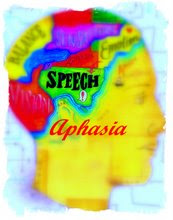Lower Stroke Death Risk in Close-Knit Neighborhoods
Study Suggests Health Benefits for People Who Have Supportive Neighbors
April 14, 2011 -- Seniors who live in supportive neighborhoods in which they have frequent opportunities to interact with friends and neighbors may have a reduced risk of dying from a
stroke compared to those who live in less sociable neighborhoods, new research suggests.
“Social isolation is unhealthy on many levels, and there is a lot of literature showing that increased social support improves not just stroke, but many other health outcomes in seniors,” study researcher Cari Jo Clark, ScD, of the University of Minnesota, says in a news release.
“What is unique about our research is that we have taken this to the neighborhood level instead of just looking at the individual.”
Measuring Neighborhood Cohesiveness
The researchers at the University of Minnesota and Rush University in Chicago studied 5,789 seniors living in three adjacent neighborhoods in Chicago. Of those in the study, 62% were African-American and 60% women. The average age was 75.
The research team interviewed the participants about their neighborhoods and interactions with neighbors. After 11 years, 701 people had suffered a stroke for the first time and 186 people had died from a stroke.
The researchers set out to measure what they called neighborhood “cohesiveness” by asking such questions as how often the people saw neighbors and friends talking -- outside in the yard or on the street.
They also asked the study participants whether they took care of each other, such as doing yard work for one another or helped watching children, and whether the people in the neighborhood looked out for neighbors or called if they noticed a problem.
Positive Social Environment
The researchers also asked whether people knew neighbors by name, whether they had friendly talks at least once a week, and whether they could call on their neighbors for help or a favor, such as lending a cup of sugar.
For each single point in the scoring system for neighborhood cohesion, stroke survival increased 53%.
Stroke incidence didn’t differ among neighborhoods, but survival did. It was far better for those living in cohesive neighborhoods, regardless of gender. However, the difference in stroke survival was only seen in white study participants. This difference was not seen in African-American participants.
“Obviously, a complex set of factors influences health in older adults and we need to be careful drawing conclusions from these data,” Clark says. “Other research also has shown that the health-protective effects of cohesive neighborhoods may be stronger in whites. We plan to conduct future studies to try to understand these findings.”
The researchers say one reason seniors who suffer strokes may be more likely to survive in closer-knit neighborhoods is that others looking out for them might assist in getting help sooner if
stroke symptoms occur.
“I think this indicates that a positive neighborhood social environment is as important to
senior health as
stress or even crime, but it is really a complex issue,” Clark says. “Nonetheless, it underscores the positive aspects of close neighbors and neighborhoods and should help bolster efforts to improve such cohesiveness.”
“Given the importance of neighborhood environments to older individuals and the fact that the population is rapidly aging, the characteristics of neighborhoods are and will continue to be of relevance to public health policies,” the researchers conclude.
The study is published in
Stroke: Journal of the American Heart Association.
MORE READ...





